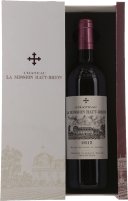E guigal La Landonne
Chateau Haut-Brion
Chateau La Mission Haut-Brion
Faiveley Corton Clos des Cortons Faiveley Grand Cru
Domaine Armand Rousseau Clos du Chateau
DOMAINE ARMAND ROUSSEAU Clos du Chateau , Gevrey-Chambertin
Domaine d'Eugenie Grand Cru
Clos Vougeot is renowned for being one of the finest red wines in Burgundy with superlative depth, richness and power. Domaine d'Eugenies Clos Vougeot comes off a small holding of 1.36ha within the large walled Clos Vougeot vineyard. The plot is located in one of the best positions at the top of the slope and is managed along biodynamic principles. The fruit is handpicked, 50% is then destemmed with fermentation taking place in small vessels, before undergoing maturation in approximately 90% new French oak barrels.
Château Palmer
Château Mouton Rothschild
Thibault Liger-Belair Les Saint Georges 1er cru
THIBAULT LIGER-BELAIR Les Saint Georges 1er cru, Nuits-St-Georges




















